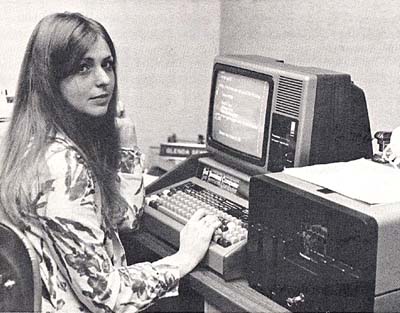anyhoo, when microcomputers started appearing in the mid 70's, I bought one of the kits below...I even got it to work. That was really fun, buying 4k memory boards, programming in assembly, storing programs to cassette tape if you didn't have an 8" or 5 1/4" floppy (when floppy really meant floppy), etc.
It now resides in a closet, taken out and turned on every few years to remember "the good times!"
|
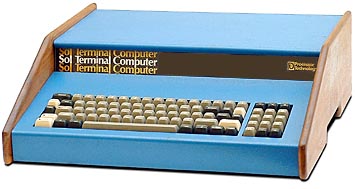 |
Named for "The wisdom of Solomon", or possibly Popular Electronics magazine editor Les Solomon, since the Sol-20 made its first appearance on the cover of that magazine.
Electronics Engineer and "Home Brew Computer Club" president Lee Felsenstein designed the Sol-20, as well as the famous Osborne 1 computer five years later.
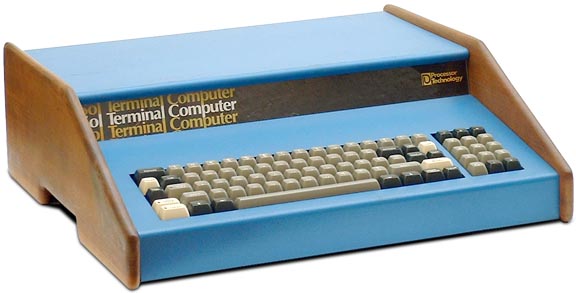
Like many other computers, the Sol-20 was envisioned as something other than what it became. Originally designed as a simple terminal to communicate with other devices, it evolved into a full-fledged S-100 based computer.
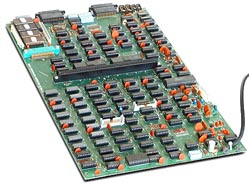 The Sol started out as the Sol-PC, a single circuit board without a case or power supply. It was sold as a $475 kit, which was assembled by the purchaser, or fully assembled for $745.
The Sol started out as the Sol-PC, a single circuit board without a case or power supply. It was sold as a $475 kit, which was assembled by the purchaser, or fully assembled for $745. From this came the Sol-10 and Sol-20. They both have the Sol-PC as the motherboard, but include a case, keyboard and power supply. The '10' lacks the vertical expansion backplane of the '20', as seen below, and the '10' also has a simpler keyboard, a smaller power supply, and cost about $200 less. Actually, very few, if any, Sol-10 computer were sold, but advertisements and articles from 1977 do mention it.
As one of the first personal computers with an built-in keyboard, the Sol-20 is very stylish, with a blue metal case and actual walnut side panels. Not many commercially available computer have wooden components! (Update: Both the NorthStar Horizon and Ohio Scientific C2-4P also have wooden parts)
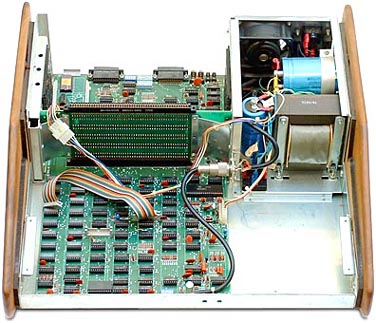
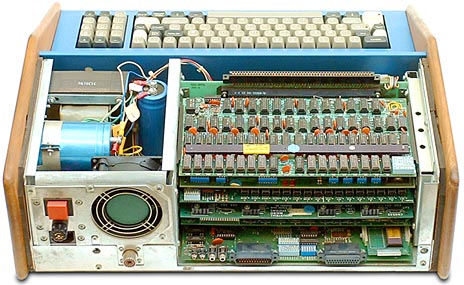
The expansion cards in the Sol-20 fit horizontally, but are very tight - some cards have to be removed two at a time because the components on one cards will hit those of an adjacent cards during removal. Why didn't they make the system taller with more room? Apparently the wood side panels determined the system size - the panels were only (cheaply) available in these dimensions.
About 10,000 (mostly Sol-20s) were sold - approximately 5,000 kits and 5,000 assembled units. The kits were half the price, but risky to assemble - it might not ever work, and you won't get your money back.
Like all early computer systems, data storage was usually on cassette tape drives, since they were cheap and abundant - the Sol even has the cassette interface built-in. But tapes are very slow and often fail to save or load the data properly.
Enter the Helios II Disk Memory System, the giant dual 8-inch floppy drive system for the Sol-20. Also available as a kit or fully assembled (it was an interesting time...), the Helios II cost $1895 (kit) or $2295 assembled.
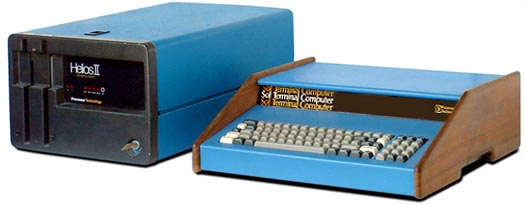
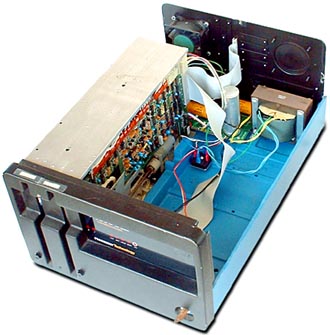 The Helios II is built around the Persci 8-inch dual drive, and can store 384K of data per disk. This drive has to be the most unique drive in existance:
The Helios II is built around the Persci 8-inch dual drive, and can store 384K of data per disk. This drive has to be the most unique drive in existance: - There is just one motor which spins both floppy disks simultaneously.
- There is a single linear positioning servo which moves the heads for both drives at the same time.
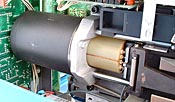
- The hub and head can be electro-mechanically disengaged from one floppy disk independently of the other.
- The floppy disks are electro-mechanically ejected - use the push button to request the disk to be returned to you.
- Data can be copied from one disk to the other without utilizing the host computer's processor.
In effect, you have two drives for a lower price.
Unfortunately, due to the complexity, the Helios II Disk Memory Systems is unreliable and requires periodic re-calibration.
Why is there so much empty space inside the Helios II? If you have the Helios II model 4, there are two dual-drives for a total of four floppy drives.
Related Links
- The Sol-20 archive
- Lee Felsenstein from Smart Computing Encylopedia
- Sol-20 from DigiBarn
- "Sol: The Inside Story" (PDF)
- Persci floppy drives & Processor Tech from Herb's S-100 Stuff
